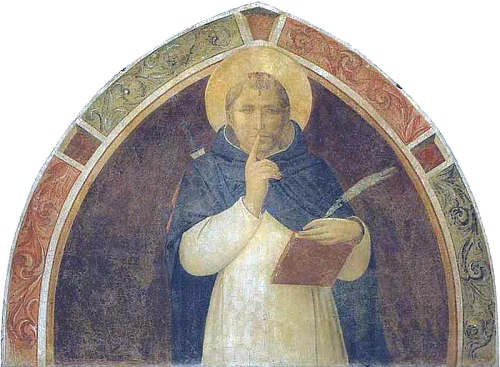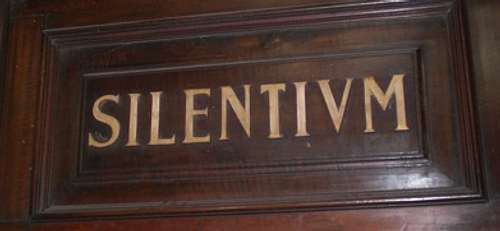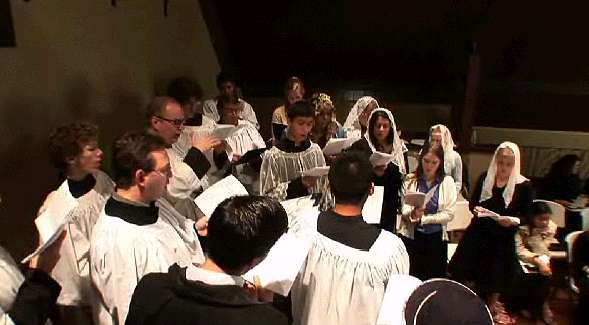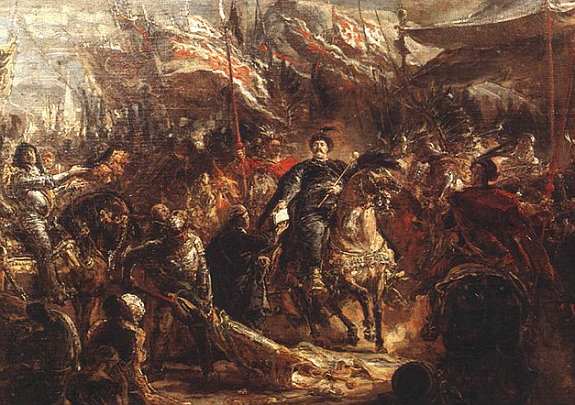I onsdagsaudiensen i går tok pave Benedikt utgangspunkt i dette og andre vers fra 15 kapittel i Paulus’ første brev til korinterne. Flere av disse versa siterte han:
«Jeg kunngjør for dere, søsken, det evangelium jeg forkynte dere, det dere har mottatt og står på. Gjennom det blir dere også frelst, når dere holder fast på ordet slik jeg forkynte det, ellers blir det forgjeves at dere kom til tro. For først og fremst overga jeg til dere det jeg selv har tatt imot, at Kristus døde for våre synder som skriftene har sagt, at han ble begravet, at han sto opp den tredje dagen som skriftene har sagt, og at han viste seg for Kefas og deretter for de tolv. …..
… Er ikke Kristus stått opp, da er vårt budskap tomt, og deres tro er også tom. Da står vi som falske vitner om Gud. For da har vi vitnet imot Gud når vi sier at han har oppreist Kristus, noe han ikke har gjort hvis døde ikke står opp. For hvis døde ikke står opp, er jo heller ikke Kristus stått opp. Men hvis Kristus ikke er stått opp, da er deres tro uten mening, og dere er fremdeles i deres synder.»
Pave har nå snakket om Paulus (igjen) flere uker etter hverandre, og i går snakket han mest om bekreftelsen av Jesus oppstandelse og om hvordan det første kristne vitnesvyrdet vokste fram. Han begynte han sin preken slik:
Dear brothers and sisters:
«And if Christ has not been raised, then empty is our preaching; empty, too, your faith. … You are still in your sins» (1 Corinthians 15:14,17). With these heavy words of the First Letter to the Corinthians, St. Paul makes clear how decisive is the importance that he attributes to the resurrection of Jesus. In this event, in fact, is the solution to the problem that the drama of the cross implies. On its own, the cross could not explain Christian faith; on the contrary, it would be a tragedy, a sign of the absurdity of being. The Paschal mystery consists in the fact that this Crucified One «was raised on the third day, according to the Scriptures» (1 Corinthians 15:4) — thus testifies the proto-Christian witness.
Here is the central key to Pauline Christology: Everything revolves around this gravitational center point. The whole teaching of the Apostle Paul departs from and always arrives at the mystery of the One whom the Father has risen from the dead. The Resurrection is a fundamental fact, almost a previous basic assumption (cf. 1 Corinthians 15:12), in base of which Paul can formulate his synthetic proclamation («kerygma»): He who has been crucified, and who has thus manifested the immense love of God for man, has risen and is alive among us.
It is important to note the link between the proclamation and the Resurrection, just as Paul formulates it, and that which was used in the first pre-Pauline Christian communities. Here one can truly see the importance of the tradition that preceded the Apostle and that he, with great respect and attention, wanted in turn to convey. The text on the Resurrection, contained in Chapter 15:1-11 of the First Letter to the Corinthians, emphasizes well the nexus between «receive» and «transmit.» St. Paul attributes great importance to the literal formulation of tradition; the end of the fragment we are examining highlights: «Whether it be I or they, so we preach and so you believed» (1 Corinthians 15:11), thus spotlighting the unity of the kerygma, of the proclamation for all believers and for all those who would announce the resurrection of Christ.
The tradition to which he unites is the fount from which to draw. The originality of his Christology is never in detriment to fidelity to tradition. The kerygma of the apostles always prevails over the personal re-elaboration of Paul; each one of his arguments flows from the common tradition, in which the faith shared by all the Churches, which are just one Church, is expressed.
And in this way, Paul offers a model for all times of how to do theology and how to preach. The theologian and the preacher do not create new visions of the world and of life, but rather are at the service of the truth transmitted, at the service of the real fact of Christ, of the cross, of the resurrection. Their duty is to help to understand today, behind the ancient words, the reality of «God with us,» and therefore, the reality of true life.
Les resten HER.











